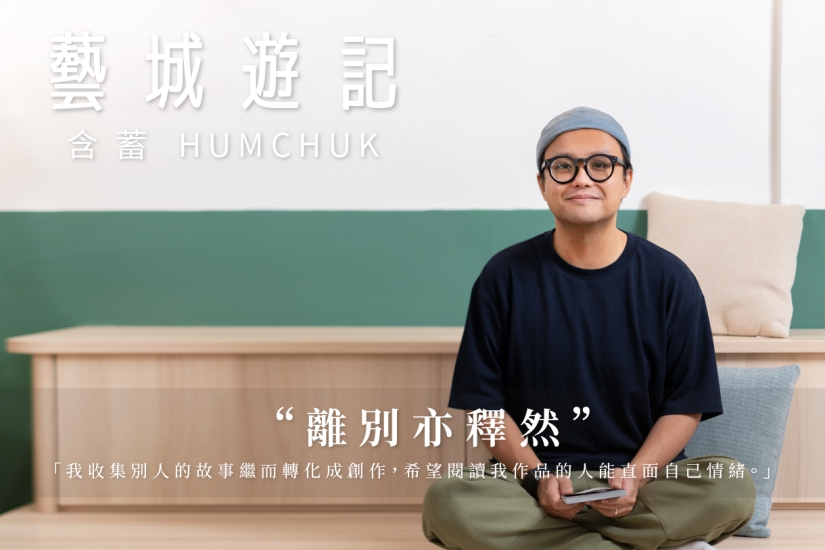Looking back over the past few years, society and people have quietly undergone many changes. These changes may not be obvious, but they have gradually taken over our daily lives without us realizing it. When it comes to the awakening of adults, whether happy or sad, we no longer easily express it. As everyone wears masks and goes about their daily lives, how long has it been since you truly faced your own emotions? Hong Kong illustrator Ricky Luk, who goes by the name Humchuk, gave up his job as an architect in 2014 to fully dedicate himself to art. He collects stories from people in Hong Kong in different ways, transforming hidden emotions into creative works. He has released several illustrated books, including “If We Only Meet and Don’t Reunite,” “I Don’t Want to Die Alone,” “Just Lie Down and Don’t Move When Tired,” and his latest book released in July, “So We Have Lost.”
Creating its iconic character “Mask Man” with subtle and minimalist strokes, erasing the identity of the character, this “Mask Man” can be the painter himself, or it can be you reading the work. He turns collected stories into a few simple lines, accompanied by healing words, recording the constant cycle of joy and sorrow, meeting and parting in the city. Through his creations, he reorganizes those unspeakable emotions, fearlessly showing his own and others’ innermost vulnerabilities, thus releasing inner emotions.
In the past two years of full of sorrow and parting, Hsuan collected stories about “farewell” publicly online and released a new book called “So We Have Lost”. Farewell is something that can never be gotten used to, whether it’s life or death, friendship, family, or love. Faced with the sadness and helplessness brought by these stories, Hsuan subtly rethinks the meaning of “loss”. In this era of popular departures, he hopes that this work will bring comfort to those who are also experiencing farewells, and that readers will no longer feel lonely.
This episode of “Art City Travelogue” invites illustrator Hanyu to take a leisurely stroll with us through the city, discussing how he has transformed collected stories into creations over the years. As a “professional sponge,” how does he deal with the emotions others bring to him and turn them into a healing force? And how was the process of creating the new book he described as full of challenges?
“When I created the character ‘subtle’ initially, I hoped to make communication more two-way.”
Reflecting on the experience of transitioning from an architect to a full-time creator, he subtly expressed that it stemmed from societal despair. Looking back on the uncertain social landscape of 2014, he questioned his innermost desires and ultimately chose to leave his comfort zone to embark on a creative path, driven by his interest in painting. Despite the seemingly unrelated nature of these two professions, he subtly pointed out their commonality, stating: “In fact, whether it’s architecture design or the industry I am currently engaged in, I feel that both involve constructing something. It’s a process of observation and transformation, just that the process of architecture is slower. But both require observation, research, and listening to many things, and then transforming them into creations.”
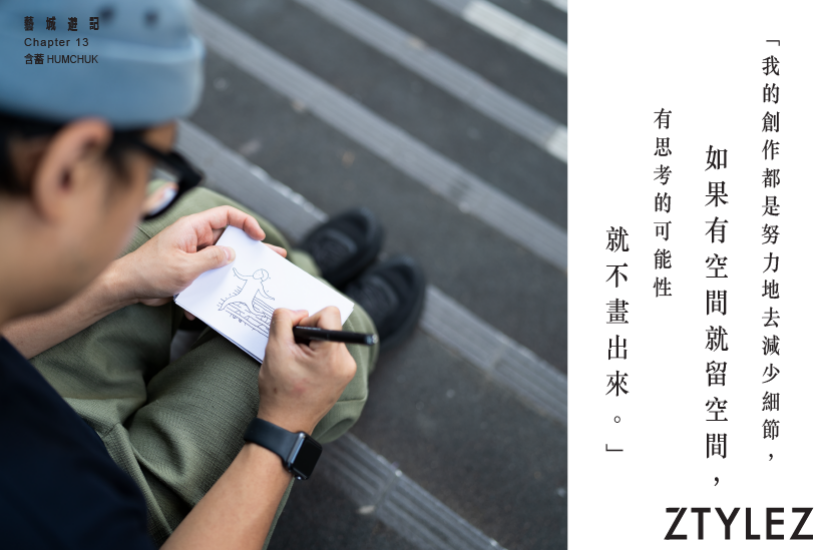
When it comes to his creations, the highly symbolic “Masked Man” has become his signature image. Reflecting on the initial choice of this pen name, he felt that communication in the city was very one-way, and he hoped that through this character with a perpetual sense of blankness, people would have space to think and empathize. He shared, “I think communication between people has always been two-way, but this city is accustomed to one-way communication. Many times, when you speak, you don’t expect others to respond. The big change from 2014 until now is that regardless of the position, it’s very one-way, never leaving room for people to respond.”
Through this mask covering the face, the artist hopes that readers can guess the expression behind it and the message behind it. While some creators constantly change their painting styles, they remain subtle yet still adhere to the principle of “simplicity.” He deliberately reduces content and details when painting, believing that whether in painting or writing, the most important thing is to “leave space when there is space, and not draw out the possibility of thought.”
He revealed that he is currently preparing for a personal exhibition, in which he will examine the changes in his creative process. He said, “Interestingly, ‘subtlety’ has not changed much over the years. In fact, no matter how many paintings I create, it’s always the same character, but it’s never about the same things, because you always have so much to express.” Through his “Masked Man” works, he discusses themes such as companionship, loneliness, powerlessness, and separation with us. Those images and texts are like a mirror reflecting our innermost emotions, allowing us to confront those buried feelings.
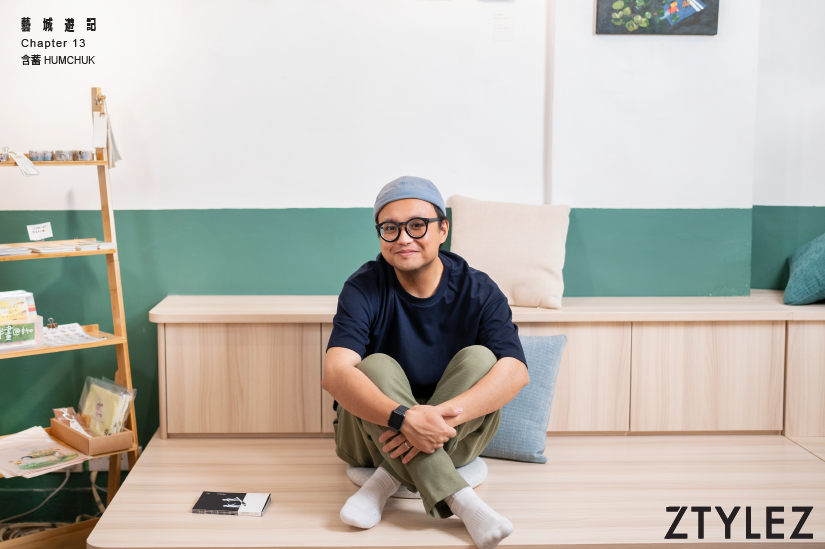
“After the encounter of the East and West, I am just a listener.”
Dealing with emotions has never been an easy task, but collecting other people’s stories is a key part of subtle creation. We are all curious to know how he digests the many emotions that others bring to him.
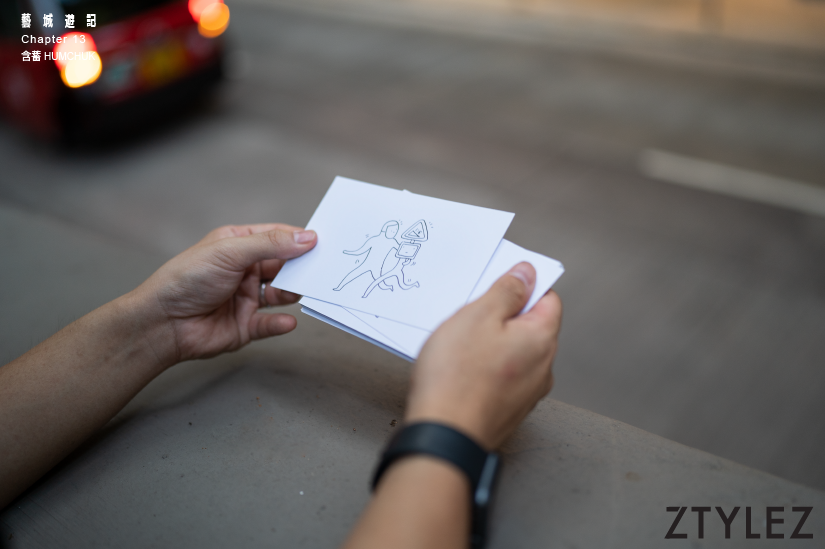
He laughed and said, “This is a question that many people have liked to ask over the years. I have many readers in the social welfare sector who are very curious about how I handle things after listening to so much. But I am very clear that I am not the protagonist of the story. When you realize that you have no responsibility, it won’t be so difficult. Many times, I am just accompanying the listeners. If I catch some creative inspiration in the process, I will transform it. However, things have passed after they meet.” This kind of tolerant and open-minded attitude has allowed him to keep going without collapsing.
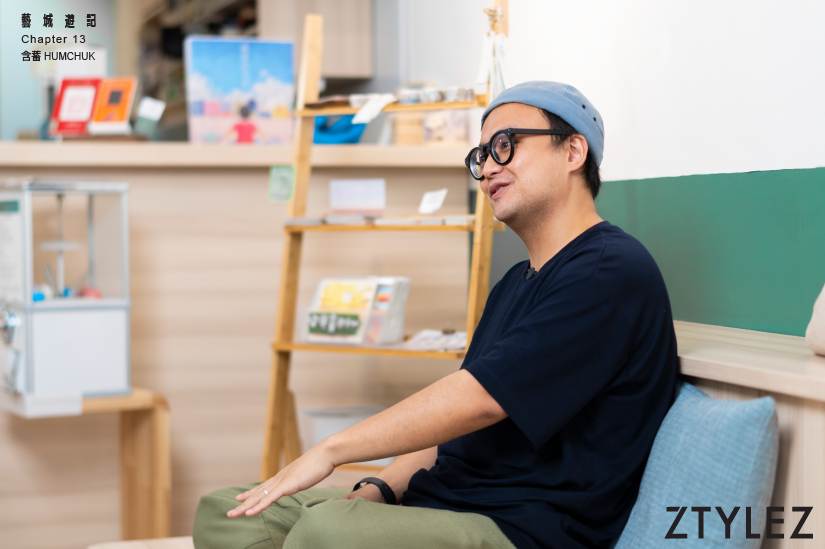
Implicitly sharing with us that a few years ago, he exchanged stories with others at a market using his artwork. At that time, it was a year when everyone felt depressed and suppressed, with about 90 people intentionally queuing up to sit down and share with him. After a girl finished speaking, she began to blame him for not being able to help. Implicitly recalled the words he said at the time: “I am not here to help you, I just happened to meet you in this process, to accompany you for 5 minutes or 10 minutes. I didn’t take anything away, I don’t have the ability to change anything about you, I’m just here to accompany you, that’s all.” These reactions not only did not crush his confidence, but also made him understand his identity more, learning to detach from others’ emotions, and creating artworks that are just the right distance away. Everything is also light, allowing readers to savor and digest, quietly savoring the lingering charm of the story.
Creating with the theme of “farewell” is very difficult.
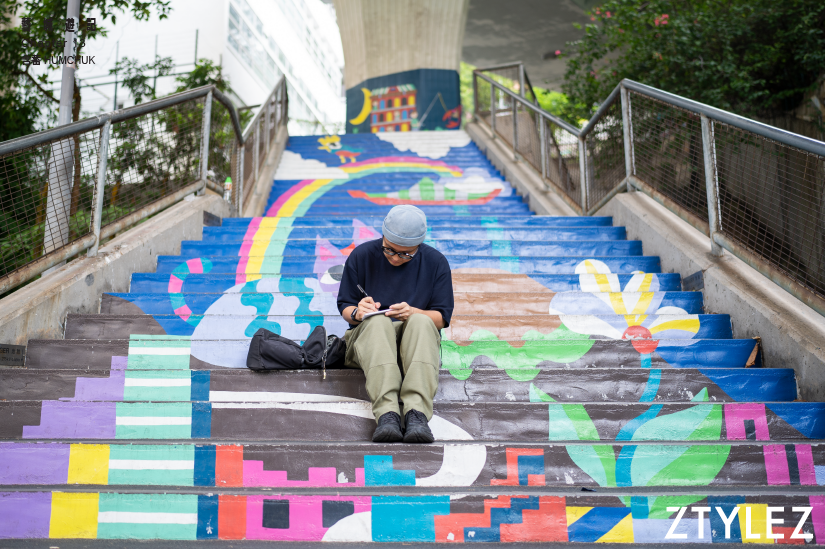
When we talk about the birth process of the new book “So We Have Lost,” we still can’t believe that we can really compile such a heavy topic into a book. When leaving becomes a routine, we are still not good at saying goodbye, and we don’t even know how to face the emotions of loss. Implicitly said: “It is very difficult to deal with the theme of farewell, because farewell is not a method, not a very short process, because farewell has always been a point on a line, carrying all the things that happened to that person before, and all the emotions and memories built with other people. Every time I immerse myself in these stories, I have to put in a lot of effort, and since you can’t get all the information in one story, you have to use a lot of imagination. When there is too much imagination, it becomes tiring, and it is even difficult to get out.”
These collected stories are about immigration, breaking up with lovers, going to jail, and bidding farewell to the deceased, carrying the weight of life and parting. I remember when I first read these stories, I secretly doubted if anyone really wanted to read such a bitter and sad book. However, loss is a stage we all must go through, which also made him start to think about what parting means and what the significance of loss is.
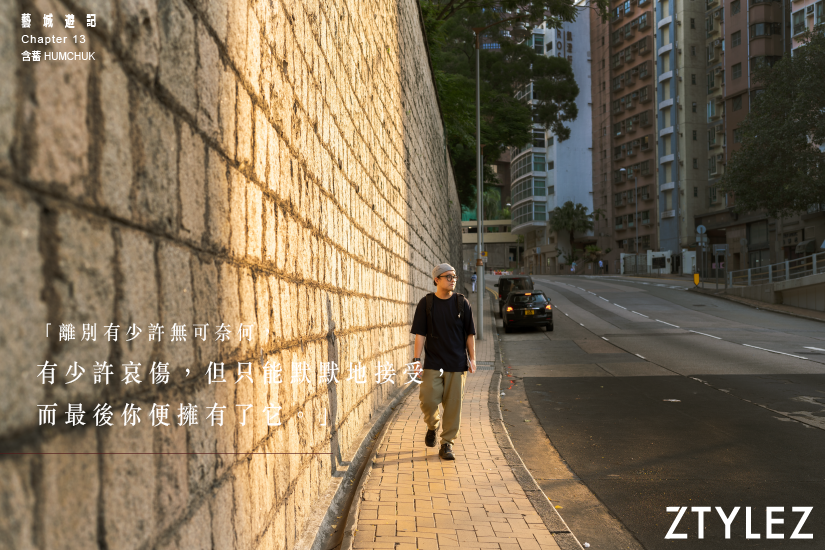
He shared insightfully, “I slowly discovered how separation or dealing with separation is something you can only silently accept. There is a bit of helplessness, a bit of sadness, but you have to accept it. The title of the book is ‘So We Have Lost,’ losing is not about having a big response or emotion inside, but in the end, you have it, silently accepting this fact.” The missing parts will become blanks in life, perhaps with a lingering, indestructible loneliness, but these experiences will eventually become a chapter in our life journey, until we truly have it.
“The greatest success in turning other people’s stories into creations is making them feel heard.”
After the new book was released, a series of seven sharing sessions were quietly held. He felt that each book sharing session was a process of “completing” because the book only briefly recorded the feelings of the moment of parting, without detailing every story. He believes that every experience is worth being heard, and the sharing sessions allow him to complete these stories in person. He is worried that readers will find it too heart-wrenching to read many stories about “parting,” so he hopes to gather more people together to share the emotions.
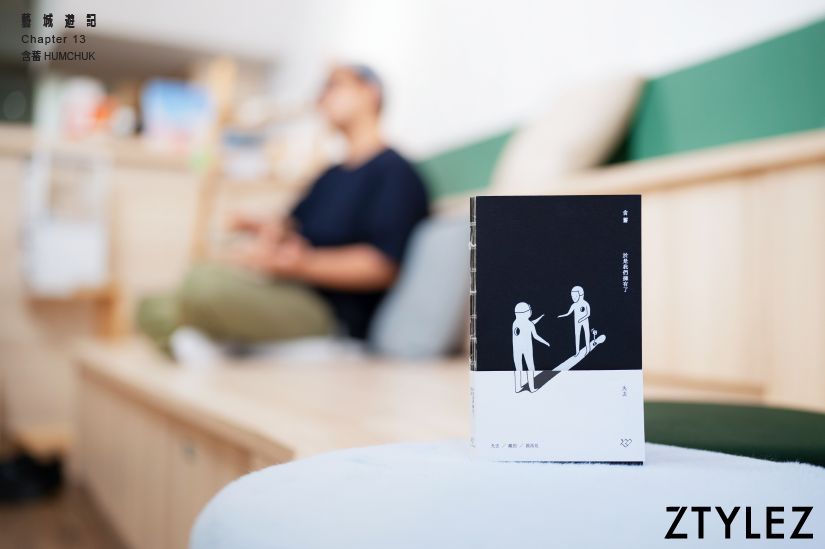
When asked about the most memorable story in the new book, Huanxu shared with us the story “The Tree.” The protagonist is about to move out of the village house where she has lived for over twenty years. On the day of departure, she hugged the old tree near her home and cried. The girl felt that the tree had witnessed everything that happened in this place but could not choose to leave. Huanxu said, “I found that separation is never about one point. Farewell is always about a single event, but separation is a long-term matter. You will always come back for some reason in the future. Those who choose not to leave will eventually depart in their own way.”
Another one is a “declaration,” this story writes about the beliefs that people who leave and stay carry with them. “I will shine in my own way / I will light up what has not been lit up / and then I will come back for you / to this bright enough place.” Every choice requires great courage, but as long as their beliefs are strong enough, those separated people will always reunite.
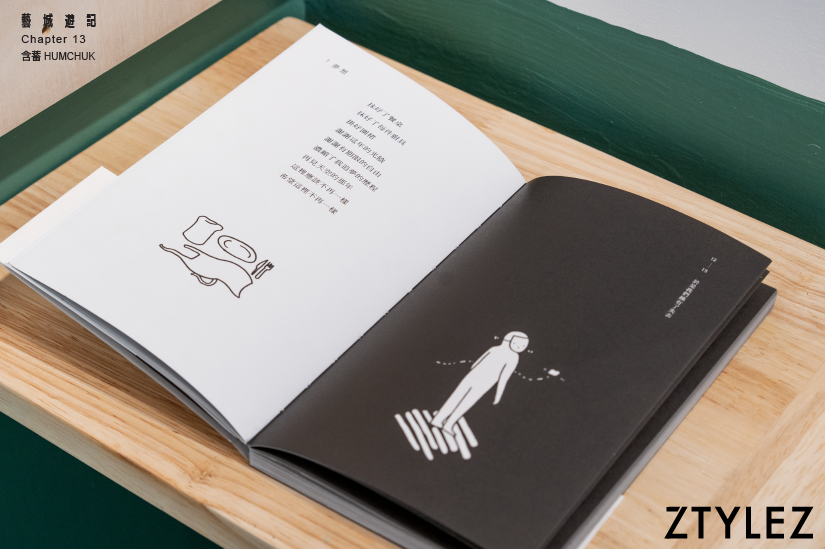
It is the hope that those who are separated can meet again, subtly expressed in the design of the new book by intentionally dividing the book into black and white on both sides, with the left side saying “stay” and the right side saying “leave.” When the reader closes the book, it symbolizes that separated individuals will meet again. He said, “You can always immerse yourself in deep sorrow, but leaving a glimmer of hope is very important.” Today’s farewell, leaving hope for a reunion, has become the wish of this book, so parting is no longer so difficult.

“My creation is all about trying to tell others to allow themselves to show their vulnerable side.”
Looking back on the past seven or eight years as an illustrator, the subtle creations have never left the people of this city. Their stories are unique, but there is a subtle emotional connection. He mentioned that before 2014, he felt that although Hong Kong people were part of the same community, everyone lived their own lives. That year, society was no longer calm, and various hidden currents emerged. He said, “It turns out that there are some things that we all decide and endure together, and it turns out that we are all connected in society.” Since then, he has actively sought out connections and stories between people, becoming the main focus of his creations.
However, living in this era, the emotions shared by society will be magnified. It seems that there is an unspoken consensus that we are happy to talk about positive emotions, but when it comes to negative emotions related to trauma, we all remain silent, afraid of showing our vulnerability. Implicitly, it means, “I think the most important step in dealing with trauma or feelings of powerlessness is first acknowledging your own vulnerability and emotions. You don’t need to work hard to gear up and tell others that you can handle certain things, because many things are beyond our control. My creation is an effort to tell others to allow themselves to show weakness.”
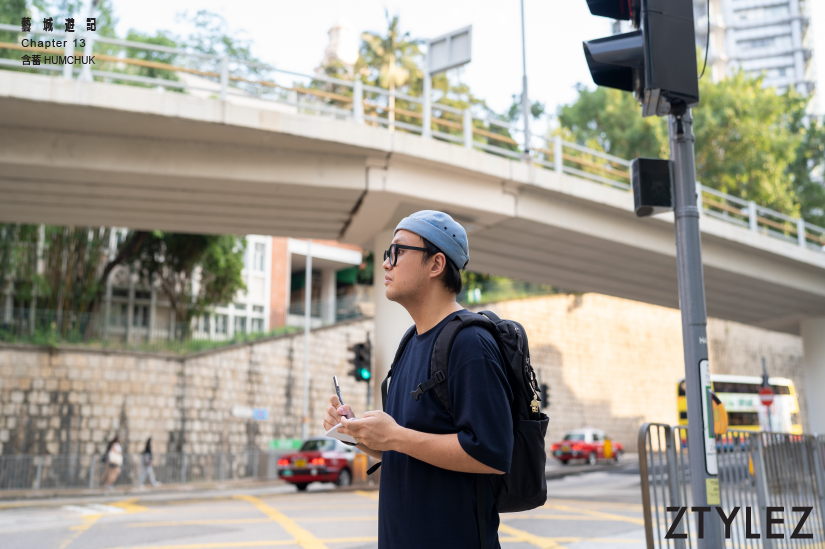
“I will continue to collect stories from Hong Kong people in a different way in the future.”
The theme of “farewell” is prominent this year, leading to the collection of many immigrant stories, prompting subtle reflections on the issues of leaving and staying. I remember in the preface of his new book, the first sentence mentioned: “When everything becomes abnormal, I desperately seek normalcy, only to realize that I am the most abnormal person in the end.” Everyone has different reasons for choosing to leave, some simply want to get away from the chaos, reorganize their lives, while others hope to see this city from a different perspective.
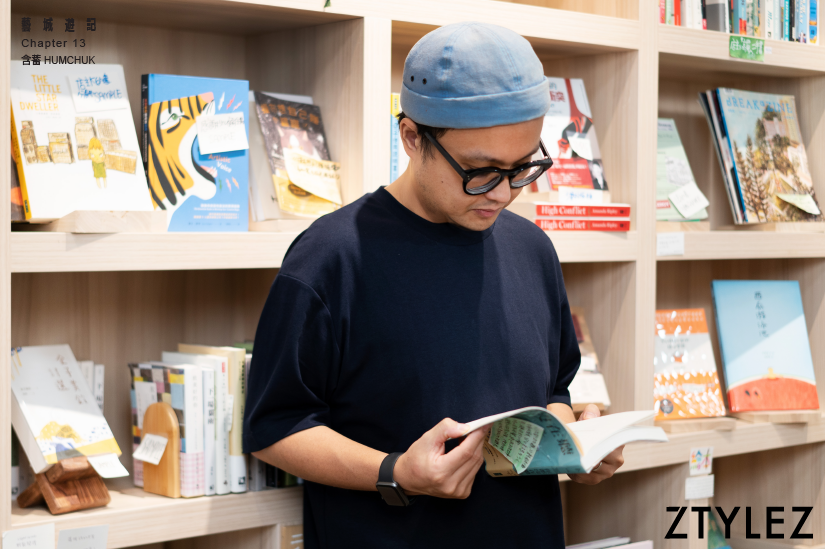
In the past few years shrouded in the pandemic and social changes, everyone’s life seems to be missing something, subtly expressing a desire to go further to see. He said he had considered the possibility of emigration, but felt that he could not abandon his identity as a Hong Konger, nor accept the responsibilities that another identity would bring him. Therefore, he may continue to collect stories of Hong Kong people living in different places in a way of residing.
Implicitly sharing, especially in creating the picture book “So We Have Lost,” he found that everyone disconnected at the point of “parting,” carrying regrets and a sense of powerlessness. However, after mourning, he hopes to continue the story after parting. Whether you stay or leave that person, what kind of life will you lead afterwards? Implicitly expressing: “I have some ambitions myself, I often feel that if I have the ability to connect people, I should be able to redefine some things. The focus of future creation must be on people’s daily lives, I think ‘daily life’ is something that can bring peace of mind to others.” Even if the future is no longer just stationed in this land, he also feels that his creative focus is difficult to separate from Hong Kong.
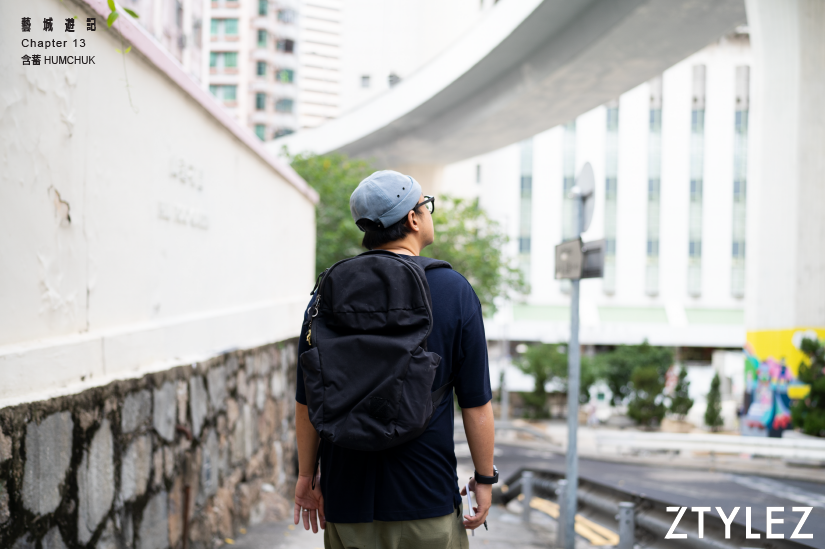
If losing is too heavy, we might as well learn to coexist with it, in order to truly find peace. Watching this creator calmly chat with us for an afternoon about “parting” and “loss,” I realized that when you are willing to open your heart and face your inner self, all emotions still have the possibility of lightness.
At the end of the interview, we asked him if he had any guidance for those going through “farewells.” With a subtle smile, he said he was just a companion, and meeting people through words and drawings was fate. He said, “I have no guidance for anyone, but I am fortunate to walk a part of the way with you, or fortunate to continue walking with you.” As for what happens after the farewell, everything is “to be continued”…
Executive Producer: Angus Mok
Interview & text: Ruby Yiu
Videography: Andy Lee, Kason Tam
Photography: Kris To
Video Editor: Andy Lee
Designer: Michael Choi
Location: Hiding Place
Special Thanks: HUMCHUK

